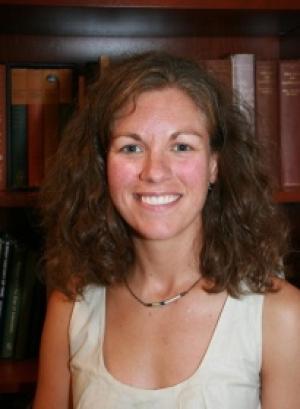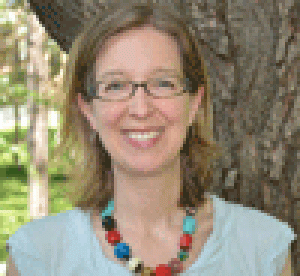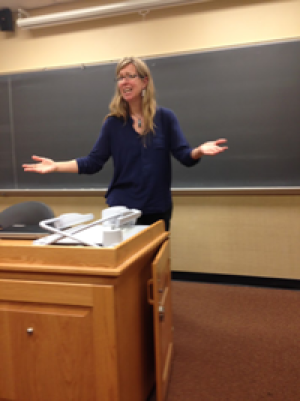Resources

Theological school deans are not just theological leaders for their institution, they must be EDUCATIONAL leaders. That is, they must implement sound educational practices related to curriculum, instruction, supervision, assessment, and administration. There is a variety of ways to assess the effectiveness of the curriculum, and there are several levels of assessment (program-level, course-level, student testing, student projects, etc.). While faculty members can focus on course-level and individual student learning assessment, academic deans need to focus on program-level assessment in order to evaluate the effectiveness of the school's curricular course of study. Here are ten basic curriculum assessment tools every academic dean needs, nine are covered in previous posts: Outcomes alignment worksheet Syllabus assessment worksheet Curriculum maps Program-level rubrics Alumni survey Grade Distribution report Program retention and completion rate worksheets Entering student profile Graduating class profile Student course evaluations In this final entry of the series we review: 10. Student course evaluations that are worth the trouble Student course evaluations, a form of indirect assessment, can be a meaningful component of a school's formative assessment of its curriculum. Unfortunately, most course evaluation tools do not provide sufficiently meaningful data to be helpful. One evidence may be how difficult it is for most schools to collect meaningful data from the evaluations. Another is how students tend to see them as a chore, resulting in cursory responses and a low rate of return. Further, in most cases, the data collected rarely is analyzed at depth or used to prompt pedagogical actions for improvement in teaching and learning. Two approaches can help make course evaluations worth the trouble for students and for deans. First, a better-designed course evaluation tool, and second, a procedure that helps ensure a higher response rate. 1. A well-designed student course evaluation tool An effective student course evaluation tool will provide data and feedback that is meaningful. That is, the information from student feedback should address issues of pedagogy that are relevant, measurable, and actionable. For example, the mythical Central Generic Theological Seminary gathers the following clusters of information on its student course evaluations: (1) Student profile information (2) Feedback on program-level goals (3) Feedback on instruction and pedagogy (4) Feedback on instructor effectiveness (5) Feedback on the relevance of the course to the practice of ministry (6) Feedback on program and learning integration. In order to make these clusters meaningful, the instrument focuses on instructional effectiveness and curricular program goals, not on what students "like" or "enjoyed." Additionally, the clusters of items are co-factored to yield meaningful interpretation. See the attached "Anatomy of a Student Course Evaluation Tool" which shows how the instrument is structured by clusters and for co-factor analysis. Download Anatomy of student evaluation Once the student evaluations are collected (CGTS uses its learning management system (LMS) for its course evaluations) the dean prepares an aggregate report for the Faculty. The aggregate report includes a comparison of selected items over the course of several semesters. The comparison focuses on areas targeted for improvement based on the student evaluations. Here are some examples: In Example 1 the dean compares student responses to degree program goal 1.A across two semesters. Additionally, the report compares two related items by gender. In Example 2 the dean highlights three instructional items related to coursework (knowledge, principles, skills) and compares the responses over three semesters. This report item shows improvement in the most recent semester indicating that the interventions faculty members applied in their courses to address these issues are having a positive effect. In Example 3 the dean compares a cluster of items related to instruction over three semesters. This feedback becomes important for the Faculty of CGTS in helping it realize the need to be more overt in applying pedagogical strategies that help students be more aware of the course learning objectives and to create learning experiences that yield a higher response from students about achieving the course outcomes. As a result of this feedback, the dean led the Faculty in applying teaching and learning practices to increase the effectiveness of these items. You can download a copy of the student course assessment questionnaire here 2. A rigorous procedure for assessment The second strategy employed by CGTS is the implementation of policies and procedures that help ensure a high rate of return on student course evaluations. The school's policy makes completion of the student course evaluation part of the course completion requirements. Students who do not complete the course evaluation do not receive a grade for the course. Additionally, the school has put in place the procedures to help ensure this indirect assessment data set is part of the formative assessment plan. A Student Course Evaluation Sample Here is a sample of student course evaluation questions with questions that cover the various clusters for co-factor analysis. Download Student Course Evaluation sample

Cláudio Carvalhaes Associate Professor McCormick Theological Seminary It was my first semester teaching. I was anxious and fearful. I was trying to know what to do, while pretending I knew everything. In my second or third class, as I was saying something critical of the US in relationship to 9/11

Cláudio Carvalhaes Associate Professor McCormick Theological Seminary All of the schools under the Association of Theological Schools are required to have a very clear and strong sense of educational effectiveness. One of the ways to gauge such effectiveness is by evaluating to what extent a course meets its stated ‘learning

Molly Bassett Associate Professor of Religious Studies Georgia State University In my last post, I talked about the final class of my new course “Between Animals and Gods” and promised to say more about the informal student evaluations I give at the end of courses. Like students everywhere, mine take

Theological schools and seminaries have been relative latecomers to rigorous practices of educational assessment. There are varied and plausible reasons for that which "make sense." However, in the current age of higher accountability to accrediting agencies, stakeholders, and educational consumers,...

Eric D. Barreto It’s that time of the semester when fine weather and the end of an academic term meld into one lovely concoction of hopeful anticipation. After a long winter, I am relishing the open windows and the warm sunlight. After a long academic year, the promise of summer...

Kate Blanchard Maybe you’ve been here before. It’s the middle of the semester. Your undergraduate survey class has been rolling along fine. Students are fairly engaged, and you feel you have a good rapport. Then along comes the mid-term, and you realize that the situation is not what you thought....

Kate Blanchard Am I the only one who didn’t learn to read until graduate school, or possibly until I started teaching? A convergence of things brought me to this realization. My current institution’s most recent alumni magazine included a feature on our New Media Studies program. It started only two..

Kate Blanchard (Ph.D., Duke University) Associate Professor of Religious Studies Alma College It’s late summer in North America. The days are breezy, the nights are cool. Students in athletics t-shirts and shower shoes shuffle around campus. Here in Alma the intermittent sounds of marching bands, coaches’ whistles, and bagpipes hover...

Israel Galindo Baptist Theological Seminary at Richmond Deans in theological schools tend to come up from among the Faculty, often out of academic disciplines not grounded in the field of education. While many have become effective teachers through years of...